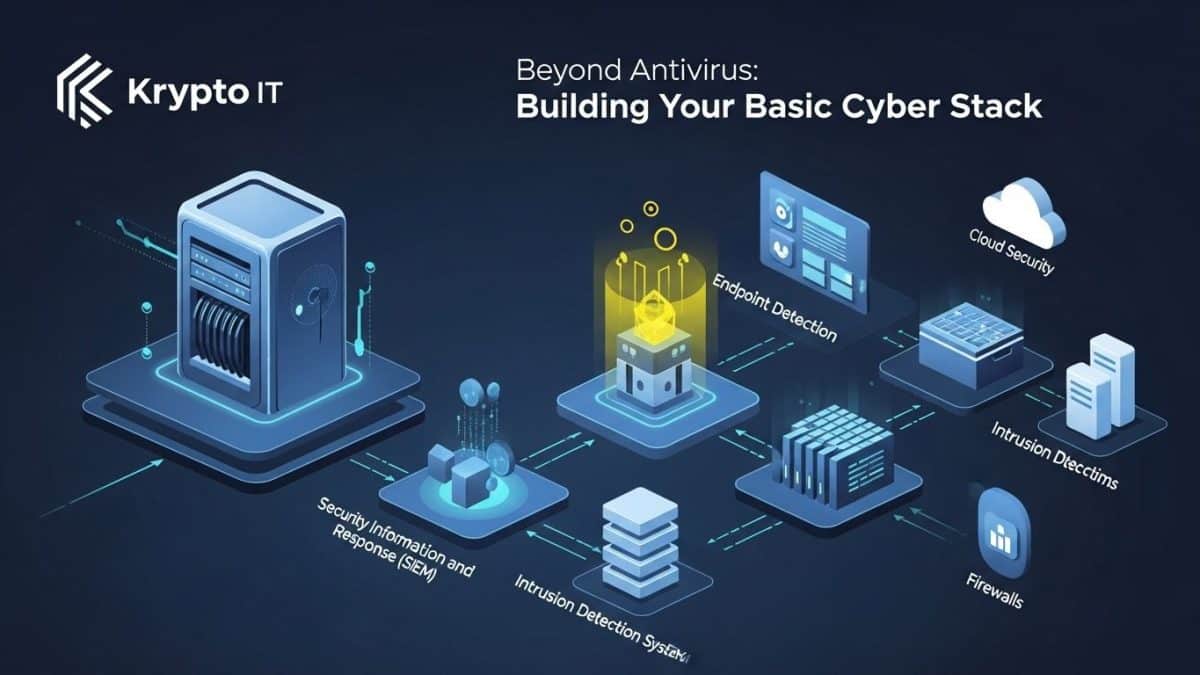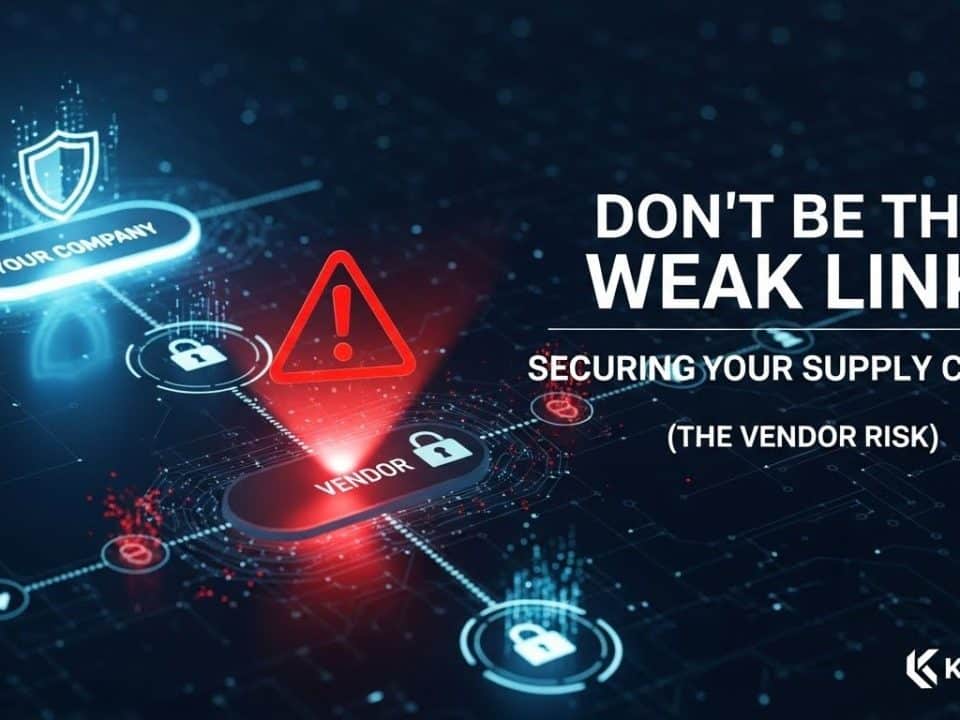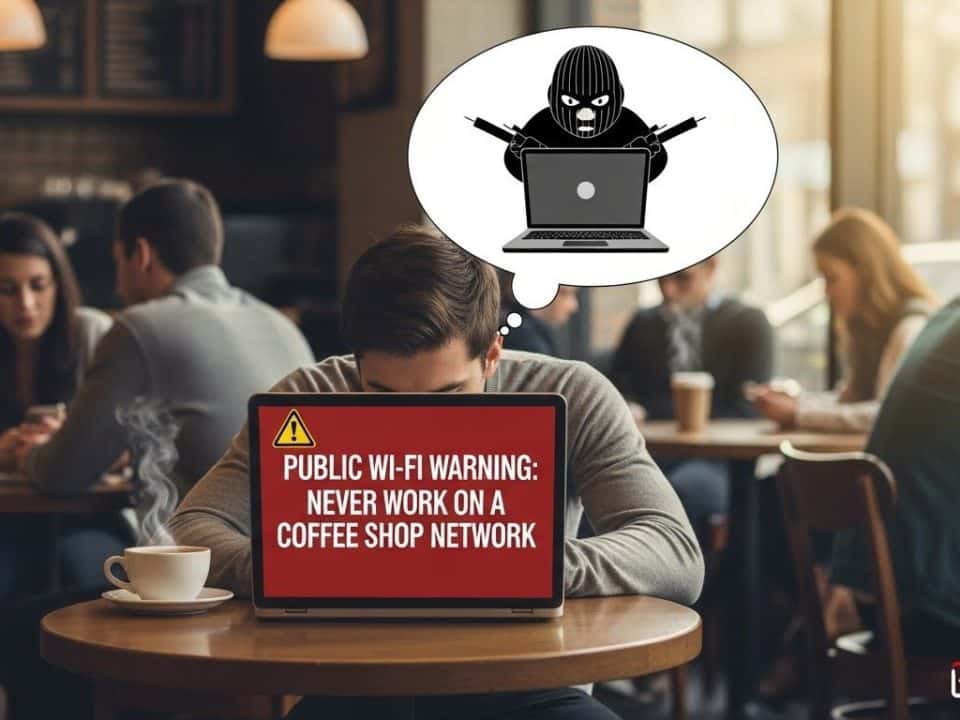
AI’s Darkest Trick: Deepfakes, Fake Recruiters, Cloned CFOs
July 18, 2025
From Backup to Cyber Resilience
July 22, 2025Essential Security Layers for Your Houston Small Business
For many Small and Medium-sized Businesses (SMBs) in Houston, cybersecurity used to mean installing antivirus software and maybe a firewall. While these tools were once foundational, the modern threat landscape has evolved dramatically. Relying solely on basic antivirus today is like trying to defend a castle with just a wooden door – sophisticated cybercriminals have long since found ways around such simple defenses.
To truly protect your sensitive data, operational continuity, and hard-earned reputation, your SMB needs a more comprehensive, multi-layered approach: a basic cybersecurity stack. This stack is a combination of essential tools, technologies, and practices that work together to create a stronger, more resilient defense against the varied and constantly evolving threats you face. The good news is that building an effective basic stack doesn’t have to be prohibitively expensive or overly complex.
Why Your SMB Needs More Than Just Antivirus
The reason antivirus alone isn’t enough stems from how modern cyberattacks work:
- Sophisticated Malware: Ransomware, spyware, rootkits, and fileless malware often employ advanced evasion techniques that can bypass traditional signature-based antivirus.
- Social Engineering: Phishing, vishing, and social engineering attacks target people, not just systems. No antivirus can stop an employee from willingly giving up their password.
- Zero-Day Exploits: Attackers leverage previously unknown software vulnerabilities that antivirus databases haven’t yet identified.
- Credential Theft: Many attacks aim to steal login credentials, which can then be used to bypass any security once an attacker gains legitimate access.
- Supply Chain Attacks: Threats can originate from trusted third-party vendors, bypassing your perimeter security entirely.
- Cloud Migration: As more data moves to cloud services (Microsoft 365, Google Workspace), traditional perimeter-based security becomes less effective.
Your cybersecurity stack needs to protect against these diverse vectors.
Building Your Basic Cybersecurity Stack: Essential Components
Here are the fundamental layers every Houston SMB should consider for their cybersecurity stack:
- Next-Generation Firewall (NGFW) & Network Security:
- What it is: Far more advanced than traditional firewalls, NGFWs include features like intrusion prevention systems (IPS), deep packet inspection, and application control. They monitor and filter network traffic based on much more than just port and protocol.
- Why you need it: It’s your digital gatekeeper, blocking unauthorized access to your network, preventing malware from entering, and controlling what applications can communicate outwards. It’s especially crucial for remote access via VPN.
- SMB Tip: Look for unified threat management (UTM) solutions that bundle NGFW features with other services like web filtering and VPN, offering an all-in-one solution for simplicity.
- Endpoint Detection and Response (EDR) / Managed Detection and Response (MDR):
- What it is: This goes beyond traditional antivirus. EDR continuously monitors all activity on your laptops, desktops, and servers (endpoints). It detects suspicious behaviors, not just known malware signatures, and can automatically respond to threats, isolate infected devices, and provide forensic data. MDR services add human security analysts to actively monitor your EDR, providing 24/7 threat hunting and rapid incident response.
- Why you need it: It’s your proactive guardian on every device, catching sophisticated malware, fileless attacks, and insider threats that antivirus misses.
- SMB Tip: MDR is often ideal for SMBs, as it provides enterprise-grade security operations without the need for in-house security specialists.
- Multi-Factor Authentication (MFA):
- What it is: Requires users to provide two or more verification factors to gain access (e.g., something you know-password, something you have-phone/token, something you are-fingerprint).
- Why you need it: It’s your strongest defense against credential theft and account takeovers, which are prevalent. Even if a password is stolen, MFA blocks the attacker.
- SMB Tip: Implement MFA for all critical systems: email (Microsoft 365, Google Workspace), cloud applications, VPNs, and internal portals. Prioritize authenticator apps or hardware keys over SMS for stronger security.
- Business Password Manager:
- What it is: A secure application that generates, stores, and manages strong, unique passwords for all your employees’ accounts.
- Why you need it: Eliminates password reuse, enforces complexity, and simplifies secure password sharing among teams. It’s a critical tool against credential stuffing attacks.
- SMB Tip: Look for a business-grade solution that offers secure sharing and centralized management.
- Email Security and Phishing Protection:
- What it is: Specialized solutions that scan incoming and outgoing emails for malware, phishing links, spam, and impersonation attempts (like Business Email Compromise – BEC).
- Why you need it: Email is still the #1 attack vector. These solutions catch threats that bypass basic filters, especially sophisticated AI-generated phishing.
- SMB Tip: Many cloud email providers offer enhanced security add-ons (e.g., Microsoft 365 Defender for Office 365). Consider third-party gateways for even deeper protection.
- Data Backup and Disaster Recovery (BDR):
- What it is: A comprehensive solution for regularly backing up all critical business data and systems, ensuring it can be quickly restored in case of a cyberattack (like ransomware), hardware failure, or natural disaster.
- Why you need it: It’s your safety net. If all else fails, robust, tested backups ensure business continuity. Follow the 3-2-1 rule (3 copies, 2 different media, 1 off-site/offline).
- SMB Tip: Look for automated, cloud-based BDR solutions that offer immutable backups and rapid recovery times.
- Security Awareness Training for Employees:
- What it is: Ongoing education for your staff on the latest cyber threats, how to recognize social engineering tactics, password best practices, and incident reporting procedures.
- Why you need it: Your employees are your human firewall. Training turns them into a strong defense, helping to prevent attacks that bypass technology.
- SMB Tip: Implement regular, engaging training modules, including simulated phishing attacks, to keep employees vigilant.
Krypto IT: Building Your Tailored Cybersecurity Stack
Building an effective cybersecurity stack might seem daunting, but it’s a vital investment for your Houston SMB’s future. You don’t need to be a cybersecurity expert; that’s where Krypto IT comes in. We specialize in understanding the unique needs and budgets of small and medium businesses, helping you assess your risks and implement a tailored cybersecurity stack that provides robust, multi-layered protection.
Don’t wait until a breach forces your hand. Protect your business with a proactive, modern cybersecurity strategy.
Contact Krypto IT today to schedule a free consultation and start building your essential cybersecurity stack.




